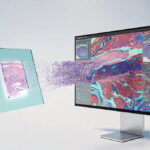Proper alignment is crucial when working with optical systems in medical devices. Even the slightest misalignment can throw off measurements and affect diagnostic accuracy. This article provides straightforward tips to help ensure precise optical alignment for reliable medical results.
Start With The Basics
Before getting into the nitty-gritty of alignment, it’s important to understand some optical fundamentals. Optical systems use lenses or mirrors to control the path of light. In medical devices, this directed light allows clinicians to examine areas inside the body or take precise measurements. Experts from Optical Perspectives Group or others will help you understand its technicalities more.
Two key alignment factors are the focal point and the optical axis. The focal point is where light rays converge after passing through a lens or off a mirror. The optical axis is an imaginary line running through the centers of the lenses and mirrors. For optimal performance, these elements must be aligned precisely.
Establish A Stable Foundation
Think of an optical system like a camera on a flimsy tripod. The slightest nudge will knock it out of alignment. For medical devices, a stable foundation is critical to protect against vibrations, bumps, or other disruptions.
Start by securing the optical system to an ultra-stable platform or surface using damping materials that absorb vibrations. Make sure the housing holding the lenses and mirrors is rigid and properly supported at all points. Any flex or tweaking in the housing will cause misalignment issues.
Clean Optical Components
While this may seem like an obvious step, cleanliness is vital for reliable optical performance. A slight smudge or speck of dust on a lens can divert light, degrading image quality or measurement accuracy.
Use specialized lens cleaning supplies and follow proper procedures to avoid further contamination. Blow away any loose particles with an air duster first, then use lens cleaning solution and a clean-room wipe to gently remove fingerprints or oils.
Does cleaning optical components seem tedious? Sure, but a few extra minutes here can prevent disappointing results and wasted time down the line.
Employ Alignment Tools
Thanks to some clever devices, optical alignment doesn’t have to be done by eye or trial and error. Special tools make the process more accurate and efficient.
An autocollimator, for instance, helps align the optical axis by projecting a target image that is viewed through the system’s objective lens. Any misalignment causes the projected image to appear off-center, allowing for precise adjustments.
Other options include alignment telescopes that project a reticle pattern to check against the system’s focal point. Laser trackers use laser beam to meticulously map out optical paths.
Don’t go old-school here – specialized alignment tools are well worth the investment for top-notch results.
Adjust In Small Increments
When it comes to optical alignment, a gentle touch matters. Large, forceful adjustments are a recipe for overshooting and losing alignment altogether.
Instead, make small incremental changes using precision tools like adjustment micrometers. Gradually nudge components into place while monitoring alignment references like an autocollimator’s crosshair pattern.
Patience is key. Constantly check alignment every step of the way rather than rapidly spinning knobs. Tiny tweaks repeated over time will walk the system into perfect alignment.
.
Mind The Environment
Changing environmental conditions like temperature, humidity, and air pressure can wreak havoc on optical alignment by slightly altering the dimensions and angles of components.
The best practice is to align the optical system under the same tight environmental conditions it will experience during actual use. Control the room’s temperature, airflow, and other variables to match the intended operational settings.
Once aligned, maintain those environmental parameters. Sudden changes may necessitate going through the alignment process again.
Lock It Down
After painstakingly adjusting for perfect alignment, the last thing needed is a random vibration or bump that throws everything off. Securing optical components in place once aligned is a must.
Start by using thread-locking adhesives on any adjustment knobs or screws that were turned during alignment. This prevents them from loosening and shifting over time due to vibrations or temperature changes.
Then apply strain relief to areas where movement could occur, such as cable connections. Use potting compounds to rigidly affix components that should never move.
These measures create a solid, locked-in alignment that won’t drift unless deliberately realigned.
Verify Alignment Quality
The best way to validate perfect optical alignment? Put the system through its paces using real-world testing conditions.
Run quality checks by having the device image or measure known samples and reference targets. This allows confirmation that light is being directed accurately. Software analysis can also quantify things like focal sharpness and light distribution consistency.
If alignment isn’t spot-on, results will appear blurred or distorted. When everything checks out, it’s a trustworthy sign the optics are optimally aligned.
Wrapping Up
Precise optical alignment is essential for the accurate and safe operation of medical devices. By following these tips and taking a methodical approach, you can ensure that your medical device’s optical system performs optimally, delivering reliable results and contributing to the well-being of patients. Remember, patience, attention to detail, and a willingness to learn are key to mastering the art of optical alignment.
Did you find this helpful? Check out our other helpful articles on our website.
Read Also
- Automated Healthcare Software Solutions: How Intelligent Platforms Are Redefining Clinical, Administrative, and Operational ExcellenceThe healthcare industry is undergoing a seismic transformation. Rising patient volumes, value-based care models, staffing shortages, and complex regulatory demands have prompted organizations to look beyond traditional tools and embrace advanced software automation. As providers search for innovative partners capable of tailoring these sophisticated systems to real-world workflows, many turn to MCSI (Managed Care Systems,… Read more: Automated Healthcare Software Solutions: How Intelligent Platforms Are Redefining Clinical, Administrative, and Operational Excellence
- Why Whole Slide Imaging Shapes the Future of Digital PathologyWhole slide imaging has become one of the most important developments in modern pathology. It changes how tissue is examined, how cases are shared and how pathologists collaborate with the wider care team. More than a technological upgrade, it represents a shift in how laboratories think about their workflow, their storage needs and the tools… Read more: Why Whole Slide Imaging Shapes the Future of Digital Pathology
- Comparing 2025 Dental Practice Management Software OptionsSoftware Key Strengths Potential Limitations Best For Dentimax • Offers both cloud-based and on-premise/server deployment. • Tight integration between imaging (e.g. X-ray sensors) and practice management, charts, treatment planning, imaging all in one. • Transparent pricing and relatively simple UI/usability; solid for small to medium general practices. • May lack some of the… Read more: Comparing 2025 Dental Practice Management Software Options
- Top Innovations in Dermatology and Skincare TechnologiesHave you ever wondered how skincare keeps getting better year after year? From fighting acne to reducing wrinkles, today’s treatments seem more advanced than ever before. The tools and techniques used by dermatologists today are smarter, safer, and more effective than those we had just a few years ago. These breakthroughs don’t just help with… Read more: Top Innovations in Dermatology and Skincare Technologies
- Telehealth and Beyond: Building a Connected Continuum of CareHealthcare is on the verge of a radical transformation. Technology no longer simply supports medicine; it actively shapes how care is delivered and experienced. Achieving a seamless continuum demands more than deploying tools—it requires intentional design, coordinated teamwork, and innovative platforms that adapt to diverse clinical and patient needs. This article explores key strategies for… Read more: Telehealth and Beyond: Building a Connected Continuum of Care
- Optimizing CT Protocols: The Hidden Key to Efficiency and Cost Savings in RadiologyIntroduction: Why CT Protocol Optimization Matters Computed Tomography (CT) is a cornerstone of modern diagnostic imaging, providing critical information across nearly every medical specialty. However, maximizing the value of CT — both clinically and financially — requires more than just advanced hardware. The real secret lies in the optimization of CT protocols. When CT protocols… Read more: Optimizing CT Protocols: The Hidden Key to Efficiency and Cost Savings in Radiology
- The Role of Carbide Burs in Modern Dental ProceduresAs a result of this procedures need to be well coordinated and to this end, precision tools are used by dental practitioners. Among the most essential tools in a dentist’s arsenal are carbide burs, which have revolutionized various aspects of dental work. Today’s dentistry cannot work without these tools as they are both strong, sharp,… Read more: The Role of Carbide Burs in Modern Dental Procedures
- Detection of Diabetic Retinopathy: The AI AdvantageDiabetic retinopathy (DR) is a leading cause of blindness among working-age adults, affecting millions worldwide. The prevalence of DR is alarmingly high, affecting an estimated 34.6 million people globally. In the United States alone, it is estimated that 7.7 million adults have some form of diabetic retinopathy. How Does Diabetes Affect the Eye? Most of… Read more: Detection of Diabetic Retinopathy: The AI Advantage









